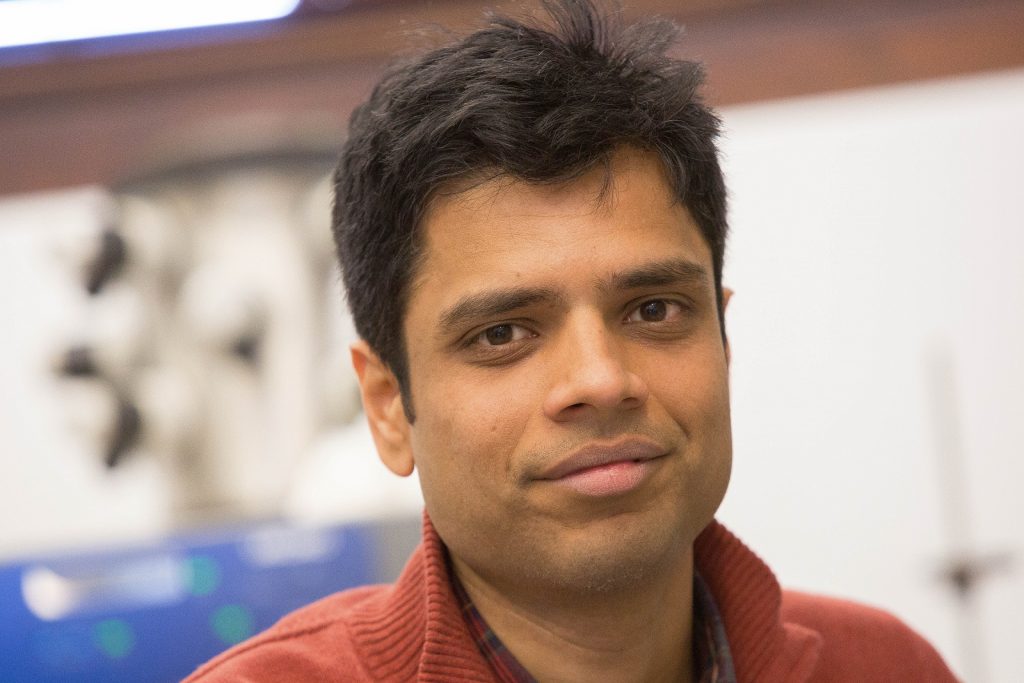Too small to be seen even with standard microscopes, microfluidics research looms large over many aspects of biochemistry, nanotechnology and biotechnology research. Precision microfluidics involve a device that has channels allowing a flow of just 50 microns or less. A device that can process or manipulate fluids on the micron scale can provide crucial data for researchers.

Pranav Soman
“This can be a fundamental and commonplace research accessory or tool in life sciences, similar to the current use of well-plates or test tubes. Almost any research in life sciences can use microfluidics to learn more about their own cells,” says biomedical and chemical engineering Professor Pranav Soman.
While microfluidic research can provide incredible breakthroughs, a usable device costs thousands of dollars and would take several months to build. Many researchers are simply not able to take on this type of research.
“The cost and time involvement related to any project involving microfluidics was a barrier,” says Soman. “Only those who have access to microfabrication facilities or clean rooms can take on this work—others are left out.”
Soman believes that modern 3D printing technology could offer a way to break down the barriers to microfluidics research and formed a small business to explore the possibilities.
“Current customers tend to limit their use of microfluidic devices, while new customers are reluctant to adopt such devices for their target applications,” says Ph.D. student Zheng Xiong from Soman’s research group. “This project will enable rapid manufacturing of customized microfluidics devices with substantially less cost and turn-around times.”

Zheng Xiong
Soman’s company, 3D Microfluidics LLC, was awarded a Small Business Innovation Research Phase One grant by the National Science Foundation (NSF) for $225,000 to conduct research and development work on fast and scalable 3D printing high-resolution microfluidics devices.
“The business model we have, anybody who needs precision microfluidics, they can talk to someone, upload the specs and we can ship it in two days,” says Soman.
Xiong will serve as the principal investigator for the NSF grant, and the chief technological officer (CTO) of 3D Microfluidics LLC.
“Our technology will open doors to widespread commercialization of precision microfluidics in biological sciences for a range of applications in fundamental cell biology, drug screening, cellular therapy, toxicity testing, and regenerative medicine,” says Xiong.
“This project exemplifies technology transfer, entrepreneurship and high-impact research with immediate industrial relevance,” says College of Engineering and Computer Science Dean J. Cole Smith. “Pranav and Zheng’s work is not only innovative on its own but could open up microfluidic research for researchers around the world.”
Soman and Xiong have been gathering information from other academic researchers and will be talking to scientists and engineers working in industry to see if their idea would benefit them.
“From the industry standpoint, we want to learn more about the interest and needs of using microfluidics and what are the current challenges and pain points,” says Soman. “Developing a prototype is stage one. The grant will help validate several technical issues before commercialization can be commenced. ”
“This is a very exciting news. Dr. Soman’s creative work will help revolutionize the manufacturing of microfluidic devices, which will benefit many researchers with much needed resources,” says Interim Associate Dean for Research and Graduate Programs Dacheng Ren. “It is a great example of engineering innovation and entrepreneurship.”
They also need to work through several logistics and quality control issues. Over the next year they will investigate new materials that are compatible with printing but do not crack and how to safely mail custom printed precision microfluidic chips to their potential customers.
“During phase one, one objective is discovering and developing new material that is not only compatible with our 3D printing platform but also exhibits necessary durability, transparency, biocompatibility, and impermeability to fluids,” says Xiong.
The project has required Soman and Xiong to take on roles as researchers and entrepreneurs. Soman says guidance and advice from fellow researcher turned entrepreneur James A. Monroe made it possible for them to make their goal a reality.
“I really enjoyed working with Pranav. It takes a lot of guts and hard work to tackle the unknowns of a startup and he has the bravery and drive to do it,” says Monroe.
Soman and Xiong’s company will be eligible to apply for a Phase II grant from the NSF if their research shows on-demand 3D printed microfluidics can be successful.
“Pranav has developed an exciting and novel platform that will enable fundamental and applied biomedical research and we are very excited that he has garnered this support to elevate the commercialization of this technology,” says Department of Biomedical and Chemical Engineering Chair Julie Hasenwinkel. “He and Zheng exemplify the entrepreneurial spirit of our discipline and set an example for others in our department.”

